Table of Contents
Introduction of Soil
- Soil is the upper layer of earth in which plants grow.
- It is a complex mixture of minerals, organic matter, gases, water, and air that together support the life of plants and living organisms.
Rock particles + Humus → Soil
- It is the most important renewable natural resource.
- It is a life – support medium, providing sustenance to plants and animals.
- All living beings depend directly or indirectly on soil for food.
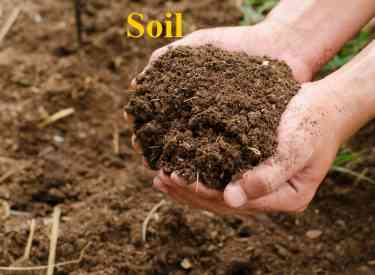
- The best soil is usually found in river valleys where silt gets renewed automatically by annual flooding.
- This makes the soil of the river valleys extremely fertile.
- The Nile Valley in Egypt, the Mississippi Valleys in the USA and the Yangtze – Kiang Valley in China are some examples of fertile river valleys.
Definition of Soil
- The uppermost layer of the earth’s crust is called soil.
- It is soft and porous.
- Its thickness ranges from a few millimetres to 3-4 metres.
Soil Formation
- The formation of soil takes place by a process known as weathering.
- Weathering is the process in which big rocks breakdown into smaller pieces by weathering agents like water, storm, etc.
- Weathering is a very slow and gradual process during which the parent rock material breaks down into fine particles.
- During the formation of soil particles, the smaller particles undergo decomposition by a number of processes such as reduction, oxidation, hydrolysis and carbonation.
- The formation of soil is influenced by a number of factors like climate, parent rock material, vegetation and time.
Process of Weathering
- Factors ( agents ) responsible for weathering of rocks are :-
1. Temperature Changes
2. Living Organisms
3. Frost
4. Water
5. Wind
1. Temperature Changes
- Rocks heat up and expand during day, owing to sunlight but they contract when the temperature falls during night.
- This successive expansion and contraction weakens rocks causing them to weather.
2. Living Organisms
- Weathering by living organisms is called biological weathering.
- Certain life forms like the lichens can grow on the surface of rocks.
- The lichens produce acids which corrode the rocky surface, and produce fine particles.
- Then, in these fine particles other organisms like microbes, algae, insects and worms produce some chemicals that add up to the process of weathering.
3. Frost
- Rain water may become trapped in small crevices of the parent rock.
- In winter, this water freezes to ice.
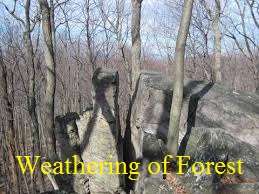
- The ice expands producing a lateral pressure, causing the crevices in the rocks to open up and causing weathering.
4. Water
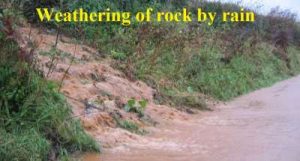
- Continual movement of rain and river water, in liquid form, causes breaking down of rock particles into finer particles through their abrasive effect.
5. Wind
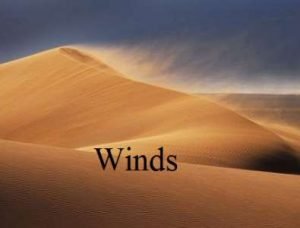
- The broken pieces of rocks are carried away by winds.
- Winds make these pieces of rocks collide with the ground and with each other.
- This result in the conversion of small pieces of rocks into tiny particles.
- Also read on touching the link:-
- Solar Cell in details
- Networking in details
- Green Concrete in details
- Geothermal Energy
- Heat Treatment
- Heat Transfer
- Energy
- Heat
- Light
About related to machine click on the link
Soil Profile
- The different layers of soil arranged in a vertical section of soil is called soil profile
- In the soil profile, we dig a trench vertically down at a particular place, along the sides of trench than we can see several layers, or horizons.
- They are named as follows:-
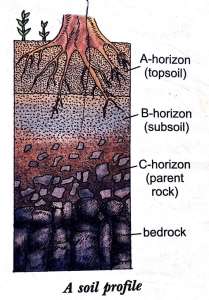
1. Topsoil ( A – horizon )
2. Subsoil ( B – horizon )
3. Parent rock ( C – horizon )
1. Topsoil ( A – horizon )
- It is the uppermost layer of soil.
- It is also known as topsoil.
Features of A – horizon
- It is the darkest in colour.
- It is rich in humus. Humus is formed by the death and decay of plants and animals. Humus means more organic matter.
- This is very fertile due to humus.
- Its layer is soft, porous and holds enough water.
- The roots of plants are present. In case of tall trees, the roots may go further down to the second horizon.
- Living organisms like earthworms, insects, bacteria and fungi are present in this layer.
2. Subsoil ( B – horizon )
- It is situated below the topsoil.
Features of B – horizon
- It is lighter in colour than the upper layer.
- It is harder and more compact than the A – horizon.
- This layer is rich in soluble minerals and iron oxides.
- Remains of plants and animals are not found in this layer.
- Roots of tall plants generally reach this level.
- Very little organic matter is found.
3. Parent rock ( C – horizon )
- It is the lowest of all the three layers and is found below B- horizon.
- It is composed of small pieces of rocks with crevices.
- This layer also collects rainwater.
- Beneath the C – horizon is the bed rock itself.
- The bed rock cannot be easily dug up.
Composition of Soil
- Soil composition refers to the mixture of mineral and organic components along with air and water that make up soil.
- A typical soil is made up of approximately 45% mineral, 5% organic matter, 25% water, and 25% air.
- These components all play vital roles in supporting plant life and overall soil health.
- The main constituents explain in detail as under:-
1. Organic material
2. Inorganic material
1. Organic material
- The organic material is decaying living matter like plants or animals.
- They consists following components:-
A. Humus
B. Living organisms
A. Humus
- Humus is formed by the decomposition of dead plants and animals.
- Microorganisms present in the soil help in the decomposition of plant and animal remains.
- All this decomposed matter mixes with the soil.
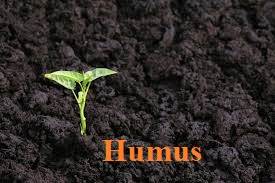
- This matter is very rich in nutrients required by plants.
- That’s why, the presence of humus is largely responsible for the fertility of soil.
- Humus is also responsible for a good texture of soil.
- Organisms living in the soil feed on humus.
B. Living organisms
- Microorganisms like bacteria and fungi live in the soil.
- They help in decaying of organic matter and thus contribute to the formation of humus.
- Some bacteria also play an important role in nitrogen fixation.
2. Inorganic material
- The inorganic materials are the rocks which have been broken down into smaller pieces.
- It consists following components:-
A. Minerals
B. Air and Water
A. Minerals
- Minerals like calcium, phosphorous, potassium, magnesium, iron, etc are present in rocks from which the soil is formed.
- In different rocks different kinds of minerals are found.
B. Air and Water
- Soil contains air trapped within it.
- This air helps roots and soil organisms to respire.
- Rainwater and the water used in irrigation seeps through soil.
- This water is absorbed by roots and transported through the steams to be used by plants for their vital functions.
Soil Colour
- The different soil components impart a characteristic colour to the soil as a whole.
- Soils exhibit a variety of colours, ranging from white, grey, yellow and red to black.
- Dark coloured soils are richer in organic matter than the light- coloured soils.
- Red coloured soils contain more of oxides of iron.
- Laterite soils are also red coloured.
- Thus, the colour of the soils give you an idea about the chemicals it contains.
- The soil colour, however, also differs depending on the geographic location of the soil.
- For instance, red and yellow colours of the soils increase from the cool regions to the equator.
Types of Soil
- Soil of different places has different composition and different properties.
- This difference is due to the difference in the particle size of the soils of different places.
- Soil particles may be of following types according to their size:-
1. Clayey Soils
2. Sandy Soils
3. Loamy Soils
4. Silt Soils
5. Gravel Soils
1. Clayey Soils
- The amount of clay particles is more in this type of soil.
- As these are the smallest particles, they from a very compactly packed soil with little air spaces.
- But its water – holding capacity is very high.
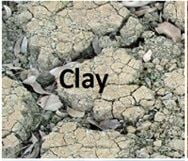
- Humus is present in a small amount in this soils.
- It is smooth to touch and heavy because of water held by it.
- It is light grey in colour.
- This is used by potters to make earthen pots, vessels and statues.
2. Sandy Soils
- In it, large amount of sand particles are present.
- There particles are big. So, they are not very tightly packed and have large air spaces between them.
- Air can be held in this type of soils. But the same property makes it unable to hold much water.
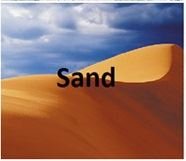
- So, its water retention capacity is very low as water drains away through it.
- It is rough to touch.
- It is light brown in colour.
3. Loamy Soils
- It is a mixture of sand, silt and clay along with the adequate amount of humus.
- It is the most suitable for growing plants.
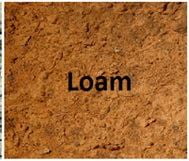
- The sand present in it provides air -holding capacity while clay provides water retention capacity.
- It is neither too rough nor too smooth to touch.
- It is dark brown in colour.
4. Silt Soils
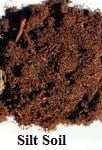
- It is very small and broken pieces of rock.
- It is larger than clay, but smaller than sand.
- They are in the form of powdery when dry.
5. Gravel Soils
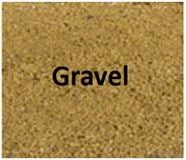
- It is rock that is of a specific particle size range.
- It is any loose rock that is larger than 2 mm in its smallest dimension and no more than 64 mm.
Classification of Soils
- On the basis of mode or place of soil formation, it is classified into three types:-
1. Residual Soils
2. Transported Soils
3. Mountainous Soils
1. Residual Soils
- It is those in which the whole process of soil formation, i.e., weathering and development of its profile occur at the same place.
- Red, black, laterite soil are examples of it.
2. Transported Soils
- It is carried to some other place by gravity, flowing water or wind.
- For e.g. alluvial and desert soil.
3. Mountainous Soils
- They are usually found in depressions and valley basins or on slightly inclined mountain slopes.
- On the basics of chemical nature, soils may be acidic, alkaline or neutral.
- Most fertile agricultural fields are neutral in nature.
- Extreme acidic or alkaline soils do not support plant growth.
Types of Soils in India
- India has a variety of relief, climate and parent rock structures.
- Due to these varied features, India has a rich variety of soils.
- The Indian soil structure can be divided into the following categories;-
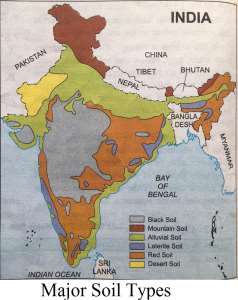
1. Alluvial Soil
2. Black Soil
3. Red Soil
4. Laterite Soil
5. Desert Soil
6. Mountain Soil
1. Alluvial Soil
- This is formed in the river valleys and the deltas.
- Deltas are also called coastal plains.

- It consists of round and smooth particles and is stratified.
- It is loamy and rich in organic matter.
- This is the best types of soil for growing crops like wheat and rice.
2. Black Soil
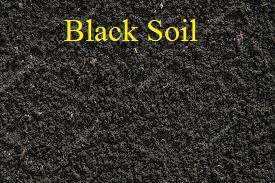
- It is mainly found in the north – western part of the Deccan Plateau.
- It is compact and fine – grained in texture and remain moist for a long time.
- This one rich in iron content and is an ideal for growing cotton and sugarcane.
3. Red Soil
- It is found in abundance eastern and southern parts of peninsular India.
- Its colour is red due to the presence of iron oxide and rich in potash.

- This one porous and unable to hold much water.
- It is not very fertile but it can be enriched by adding chemical fertilisers.
- It is fit for growing oilseeds and millets.
4. Laterite Soil
- It found in regions with heavy rain obtain like parts of Tamil Nadu, Orissa, Andhra and Assam.
- It appears reddish due to the presence of hydrated oxides of aluminium and iron with quartz grains.
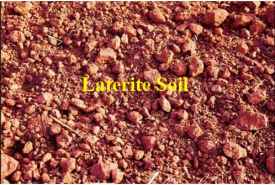
- They are poor in nutrients and needs to be enriched with chemical fertilisers.
- This one good for plantation of tea, coffee and coconut.
5. Desert Soil
- It is found in region of Rajasthan and some parts of Gujarat.
- It is coarse, sandy and porous.
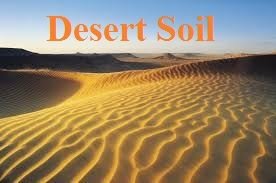
- They can’t retain water therefore, it requires a constant supply of water.
- It lacks humus content, hence is not very fertile.
6. Mountain Soil
- It is found in the Himalayan region.
- Its quality varies with varying heights.
- Most mountain soils are thin but can be cultivated with the use of fertilisers.
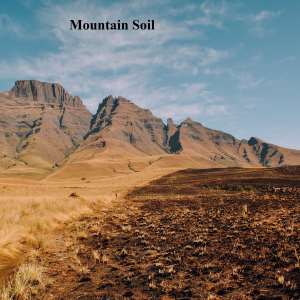
- These are particularly suited for growing orchids.
- Peat soil is a type of mountainous soil which is rich in humus.
Importance of Soil
- It is valuable to man for food production.
- It is also a basic part of wildlife habitats and recreational resources.
- Various soil organisms like earthworms, bacteria, insects and mammals use this as a natural habitat.
- Plants obtain water and minerals through this land resource.
- Plant sources of many medicinal drugs exist here.
- Wood, fibre, fruits, rubber, oils, dyes and various other economic products which the man uses, all dependent on this land.
- The very existence of mankind is greatly influenced by this land resource.
- That’s why it is importance.
Properties of Soil
- An ideal soil should have the following properties:-
- Good water – holding capacity
- Adequate air spaces
- Good texture obtained by mixing different sized particles.
- Good amount of humus.
Soil Erosion
- Soil erosion is the removal of top soil.
- This is brought about by wind and water or rain.
- There are several factors which allow water and wind to cause soil erosion. Some of these factors are:-
1. Deforestation
2. Over grazing
3. Poor Farming Methods
4. Forest Fires
1. Deforestation
- Removal of vegetation that is removal or cutting of trees allows water to runoff the soil.
- The water carries it particles into the rivers, which get chocked with silt. The net result is floods.
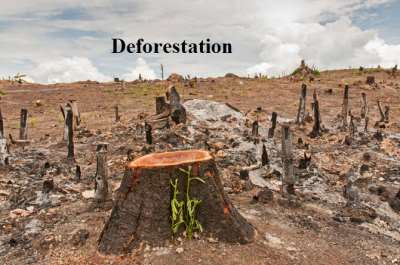
- Since deforestation makes the land barren, wind erosion too takes place.
- The root system of the plants binds the soil together as well as acts as a channel for water to percolate down, thereby, preventing erosion.
2. Over grazing
- Over grazing by large animal populations has also destroyed vegetation and resulted in barren lands.

- The barren lands do not hold water any more.
- In addition, barren lands are liable to erosion by strong winds.
3. Poor Farming Methods
- Ploughing loosens the soil and destroys its natural structure.
- Failure to replace humus after successive crops reduces the water holding capacity.
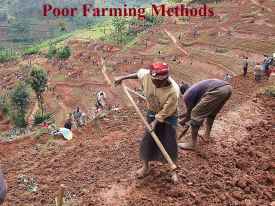
- The soil thus dries and is blown away by winds.
- On sloping ground, such soil may be eroded by water.
- Continuous cropping of land by only one type of crop also adds to loss of fertility.
4. Forest Fires
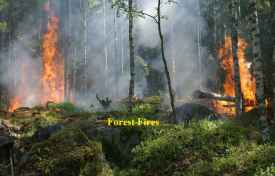
- Forest fires, too lead to soil erosion.
- After fire, the soil is exposed to two main factors causing erosion, namely wind and water.
Prevention of Soil Erosion
- The prevention of soil erosion can be brought about by controlling the factors which cause soil erosion.
- The methods are as follows:-
1. Deforestation should be stopped.
- Rather, trees should be planted.
- Afforestation should be undertaken not only in areas previously cut, but additional areas should be brought under plantation.
2. To reduce the effect of strong winds in the fields, the boundaries of the fields should be planted with trees in two to three rows.
3. To maintain the soil in its natural condition, it is advisable to grow different crops.
4. Proper drainage and irrigation arrangements should be made in the fields.
5. On the sloping areas in hills, strip cropping should be practised, thereby reducing the steepness of the slopes and checking soil erosion.
Uses of Soil
- It is the medium for plant growth.
- It is used for recycling of nutrients and wastes.
- This is used for water supply and purification.
- Habitat for soil organisms.
- It is used in the field of engineering.
Let’s Know More
1. Define Loams.
Ans:- A soil containing a mixture of sand, silt and clay is called a loams.
- It is the best soil for plant growth.
2. What is Percolation rate of soil?
Ans:- The property of soil by which it allows water to seep through it is known as percolation and the amount of water that percolates through soil in a minute is called the rate of percolation.
3. What is Strip – cropping?
Ans:- Strip – cropping means the planting of crops in rows or strips to check flow of water.

